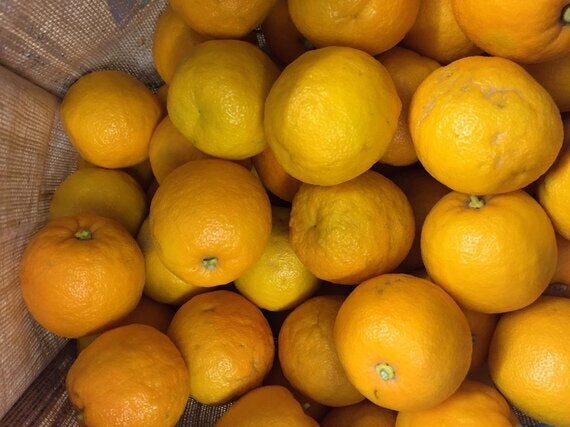
Now is the season for making marmalade. If you consider yourself rather skilled at making this breakfast preserve you may like to enter the Dalemain World Marmalade Awards, now in its eleventh year.
On the Isle of Benbecula there is a splendid independent supermarket run by the eponymous MacLennan family. It's brilliant not least because they packed up 12lbs of perfect Seville oranges (converted to kilos at £1.99) for me to play with in my South Uist Island kitchen.
I, of course, include seaweed in most of my daily cooking be it in dried form as spice or fresh as a sea vegetable, but combining seaweed with Seville oranges is not original. In Food in England (1954), Dorothy Hartley describes laver as one of our oldest salads and also as a seaweed that works well with Seville oranges. She writes;
The gatherer plucks it from the rocks, gives it a preliminary rinse in a clear sea pool, and finally washes it and boils it for hours and packs it in a crock.
Hartley suggests that laver has a queer iodine taste that few will like at first. I disagree. When dried the flavour of laver is most subtle. Hartley tells of a laver sauce, which the Welsh historically served with mutton - this is where the Sevilles sneak in. Butter and the juice of half a lemon is added to cooked laver but in the all too short Seville season, the lemon may be replaced with Seville orange.
I'm of the opinion that a recipe is rarely originally and I remain indebted to Dorothy Hartley for inspiring me to add Sevilles to my seaweed repertoire.
Last year I added dulse to the rolling boil of my marmalade (there is a special McNabs category at the marmalade awards for those who enjoy experimentation) but the judges didn't consider my effort reminiscent of the sea. Some seaweed species aren't overpowering when baked or boiled.
Here is a recipe from Seaweed in the Kitchenthat includes laver and the juice of a Seville orange. Check your local beach for fresh laver or buy prepared laverbread - and now is the season to find Seville oranges in a shop near you.
KELP POACHED SALMON, LAVER AND SEVILLE ORANGE EN CROUTE
A recipe inspired by Dorothy Hartley. Testing the recipe in January allowed me to use Seville orange juice in this glossy laver sauce but out of season replace the bitter orange with a lemon. A heaped teaspoon of pomegranate seeds will add texture and colour too.
Marine algae: 6cm sugar kelp frond 8tbsps prepared laverbread
Additional ingredients:
4 x100g salmon fillets
400g puff pasty
4 heaped tsps marmalade
Juice and zest half Seville orange (or lemon)
15g butter
Extra flour
Egg-wash
Set the oven to 220C Gas 7.
Fill a pan with enough water to cover 4 salmon fillets. Add the sugar kelp and bring the water to the boil. Simmer for 20 minutes to allow the kelp to infuse into the water. Remove the pan from the heat and put the salmon fillets into the hot kelp water. Pop a lid on the pan and set aside for about 30-40 minutes until the salmon is almost poached. Use a slotted spoon to remove the fillets from the pan to a plate and leave to cool.
Lightly dust a surface with flour and roll 4 rectangles approx 18cm x 10cm (to wrap the salmon in). Place a tbsp of laverbread (cooked laver) off centre towards the front of the pastry (to cover the salmon fillet but leaving the ends free) and place the poached salmon on top of the laver. Spread a teaspoon of marmalade on the salmon and egg- wash the sides of the pastry. Fold the nearest side of the pastry over the salmon to make a parcel and press and crimp the edges to seal. Brush the parcel with egg-wash and pierce the top to allow steam to escape. Bake for 12-15 minutes in a pre- heated oven until golden.
Meanwhile in a saucepan, heat the remaining laverbread, butter, Seville zest and juice together, whisking well to make a thick and glossy sauce to serve with the salmon.